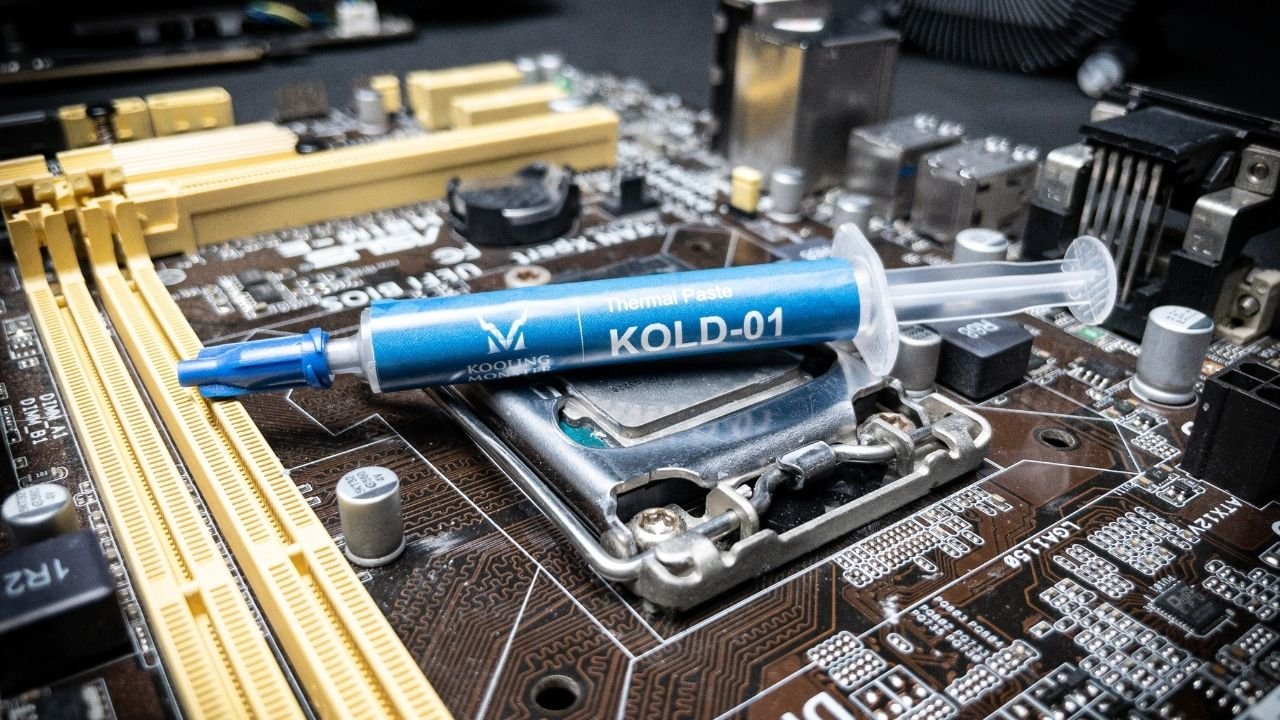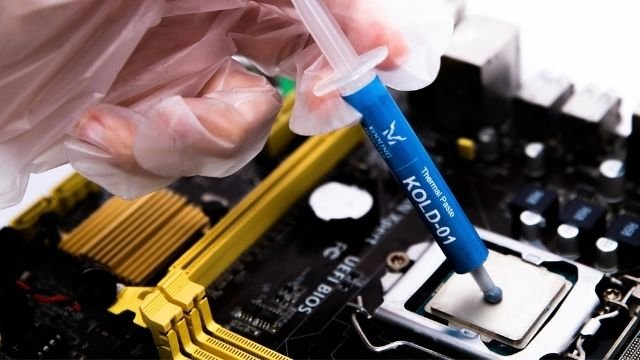Is Applying CPU Thermal Paste Worth It and Mandatory?
If you’re new to building PCs then the likelihood is that you already have a ton of questions. We are on hand to answer an often overlooked query that you might be having and that is, do you need to use thermal paste? The answer is yes – and here’s why…
What Is Thermal Paste and How Does It Work?
Thermal paste is a vital cog in PC build that is sometimes overlooked (perhaps because it isn't as interesting as some of the more exciting build components). Yet, it is one of the most vital requirements for keeping your CPU cool and running properly.
The thermal paste fills seemingly minor flaws and air bubbles between the CPU and the cooler or heatsink. Air bubbles can easily form during construction and prevent the CPU from cooling correctly and this can in turn harm the hardware. This potentially long-term and irreversible damage to expensive equipment makes it critical that PC builders use a high-quality thermal paste to avoid damage and performance issues.
Thermal paste, also known as thermal compound or thermal grease usually has some sort of metallic or ceramic compound that gives it the qualities that make it so functional. Thermal paste is a heat conductor. Plugging any air gaps allows the smooth transferral of heat from a CPU to a heatsink without impacting performance or causing the hardware to work overtime to try and maintain a suitable temperature. (Learn more about What Is Thermal Paste?)
Is Having Premium CPU Thermal Paste Worth It?
Using a premium thermal paste is absolutely worth it. It’s not a component that needs to be changed too often, although how regularly you change thermal paste depends on your PC use. More demanding PC will put more pressure on the hardware and subsequently increase the base temperature of the CPU.
With lower quality thermal paste, the change will need to be more regular, likely every couple of months to keep the hardware working efficiently. A dried or cracked appearance will indicate that you need to remove old paste and reapply a new one. The drying and degradation under the heat of the CPU is one of the most common reasons for loss of function, and with cheap thermal pastes, this is likely down to the degradation of organic solvent that has evaporated into the air.
There are, of course, premium pastes that do not use organic solvent. Pastes like KOLD-01 have a unique formula that will give them a longer shelf-life and make the maintenance of your PC build a bit more simple. Premium thermal paste will not only last for longer, but it also has a superior ability to transfer heat. This means it can be applied more thinly and evenly and can still transfer heat faster and cool down the CPU more efficiently.
If you plan on fully overclocking your machine, selecting the best thermal paste is essential. When combined with a good thermal paste, even the finest gaming CPUs can typically achieve significantly higher overclocks.
What Happens If No Thermal Paste Is Applied?
Even worse than using cheap thermal pastes, is using none at all. You are putting unnecessary pressure on your hardware to be able to self-regulate temperature and continue to work efficiently.
We ran a case study where we compared a PC using Kooling Monster KOLD-01 to a PC with no thermal paste, and here’s how it went:
PC Temperature Testing Conditions
PC Spec:
CPU: Intel Core i3-10105F
Motherboard: Asus H510M-E
Cooler: air cooling Golden field
Memory: ADATA 8G
Software
AIDA 64 (stress CPU)
HWinfo (CPU package temperature)
Thermal Paste
Kooling Monster KOLD-01 with 5 points application method
Results of Testing:
The build without thermal paste soon rockets up to an average temperature of 95°C/200°F, almost 20° higher than the PC with thermal paste, as shown in the graph above.
If left at that temperature, the motherboard would most likely shut down the computer due to overheating. If the computer is repeatedly restarted without thermal paste and run at full capacity, the motherboard will almost certainly be permanently damaged.
Computers are generally designed with ventilation and other heat dispersion options in mind. When you build your own PC, you can add vents or even liquid cooling systems to help keep your system temperature down and your performance up. The CPU is one of the hardest working components of your build and will therefore often have a heatsink or cooling system of its own, all you need to do is ensure that the heat can efficiently pass between the two.
How to Choose CPU Thermal Paste
When choosing a thermal paste, there are few things to consider beyond thermal conductivity. Of course, you’re using a paste to ensure that heat is being properly transferred from CPU to heatsink, but choosing a brand that can be applied thinly and evenly will make the whole process more efficient (and save you money on having to keep rebuying paste).
A paste that is thinly spread will be more efficient in its heat transfer, and the viscosity of the paste will often give an indication of how easy this will be. Kooling Monster Kold-01 is extremely thin (0.02mm compared to the market average of 0.5mm) and has a unique design that means it can be easily spread.
A premium paste will be easier to spread, making the application process much more simple – plus you probably won’t have to do it as often! When you notice cracks or dryness in your thermal paste, it’s time for a change, and with products like KLEAN-01 paste cleaner, it can be really quite simple to remove the old paste from the CPU and make for easy reapplication.
Now you can ensure that you are correctly maintaining your PC with thermal paste and are able to identify when it needs replacing. All that’s left to do is to get your hands on a high-quality paste, like our KOLD-01 paste, to ensure that when the time comes to put your build together, you have everything you need to get it up and running efficiently.




